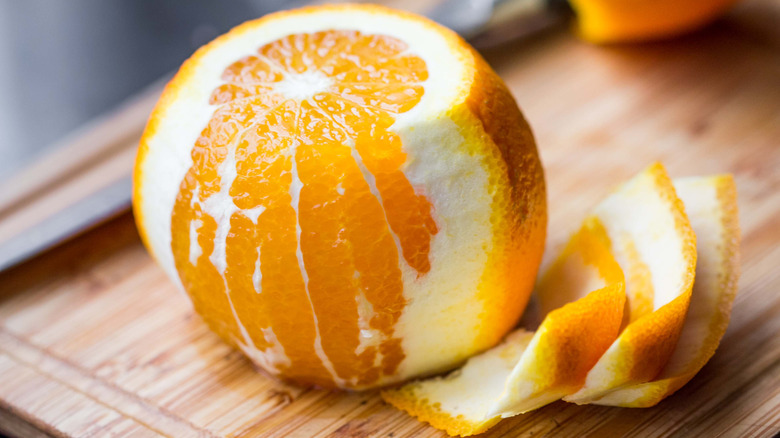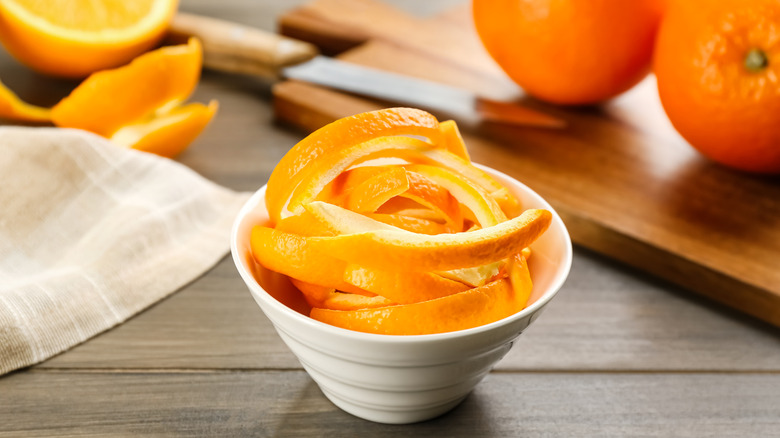Ina Garten's Technique For Pith-Free Orange Segments
Fresh, juicy segments of orange make a colorful, zesty addition to a number of dishes, both savory and sweet. From using them in salads, fish, or chicken recipes to decorating desserts such as crepes suzette, the bright citrus segments look beautiful and also taste sweet and delicious. But, what's not so beautiful, sweet, or delicious is the white pith and connective membrane around the citrusy centers.
Orange pith is decidedly bitter, while the fruit's membrane is tough and chewy. And learning how to cut citrus fruit into tender, juicy supremes (as the segments without the seeds, pith, and membranes are known) can be tricky. But Ina Garten has a technique to make it a whole lot easier for professional-looking results every time.
The Barefoot Contessa begins by slicing off the top and bottom of the orange, so that it can stand upright on a cutting board without wobbling or falling over. Then, she slides the knife along the contour of the fruit to remove the peel piece by piece, cutting away the bitter pith whilst keeping the orange flesh intact and ready for segmenting.
Buy a ripe orange and use a small serrated knife
A dry orange that's past its prime isn't ideal for segmenting, so you'll want to pick one that's ripe and firm to make the job easier. Once the peel is removed, using Ina Garten's method of cutting along the contour of the orange, you can take a knife to carefully cut at an angle between a segment and the membrane on both sides, allowing the unwanted part to be lifted cleanly away.
As for the best knife, using one that's too large can make it difficult to cut away the peel and separate the segments without leaving a lot of waste behind. As obvious as it sounds, an orange is round, whereas most knife blades are flat. So, a small, sharp knife allows you to trace the contours of the orange with more accuracy, while a serrated blade will cut through the skin more easily.
The brightly colored, jewel-like orange segments may be what you're going after, but don't throw away the rest of the fruit just yet — every part of the orange has a purpose.
Ways to utilize leftover orange peels and membranes
Once the orange has been segmented into juicy supremes, you'll be left with some of the peel and membrane. This may look like waste, but you may want to avoid throwing them away. Both can be used to make the most out of the whole fruit, and help to create a range of new dishes in the process.
The membrane doesn't look especially appealing, but it actually contains a surprising amount of juice. Using your hand, squeeze it into a bowl, collecting the precious liquid, which can be used in salad dressings, desserts, syrups, or any recipe that calls for a squeeze of citrus juice.
The leftover orange peel is also a valuable ingredient in the kitchen, too. Try candied peels for a sweet treat, or incorporate them into a fruity marmalade. The peels can also be used fresh or dehydrated (by baking them in the oven for 30 minutes) in a variety of cocktails for a burst of bright, zesty flavor. Or for a pro bartender trick, learn how to flame an orange peel for cocktails that are guaranteed to impress.



